Introduction to OpenAI
Introduction to AI
The Evolution of AI From Rule Based Systems to Deep Learning
In this article, we explore how artificial intelligence (AI) has progressed from simple rule-based systems to the sophisticated deep learning models that power today’s technologies. We’ll cover five key phases:
- Early Symbolic Systems
- The Shift to Machine Learning
- The Deep Learning Revolution
- The Convergence of AI and Data
- Emerging Trends Beyond Deep Learning
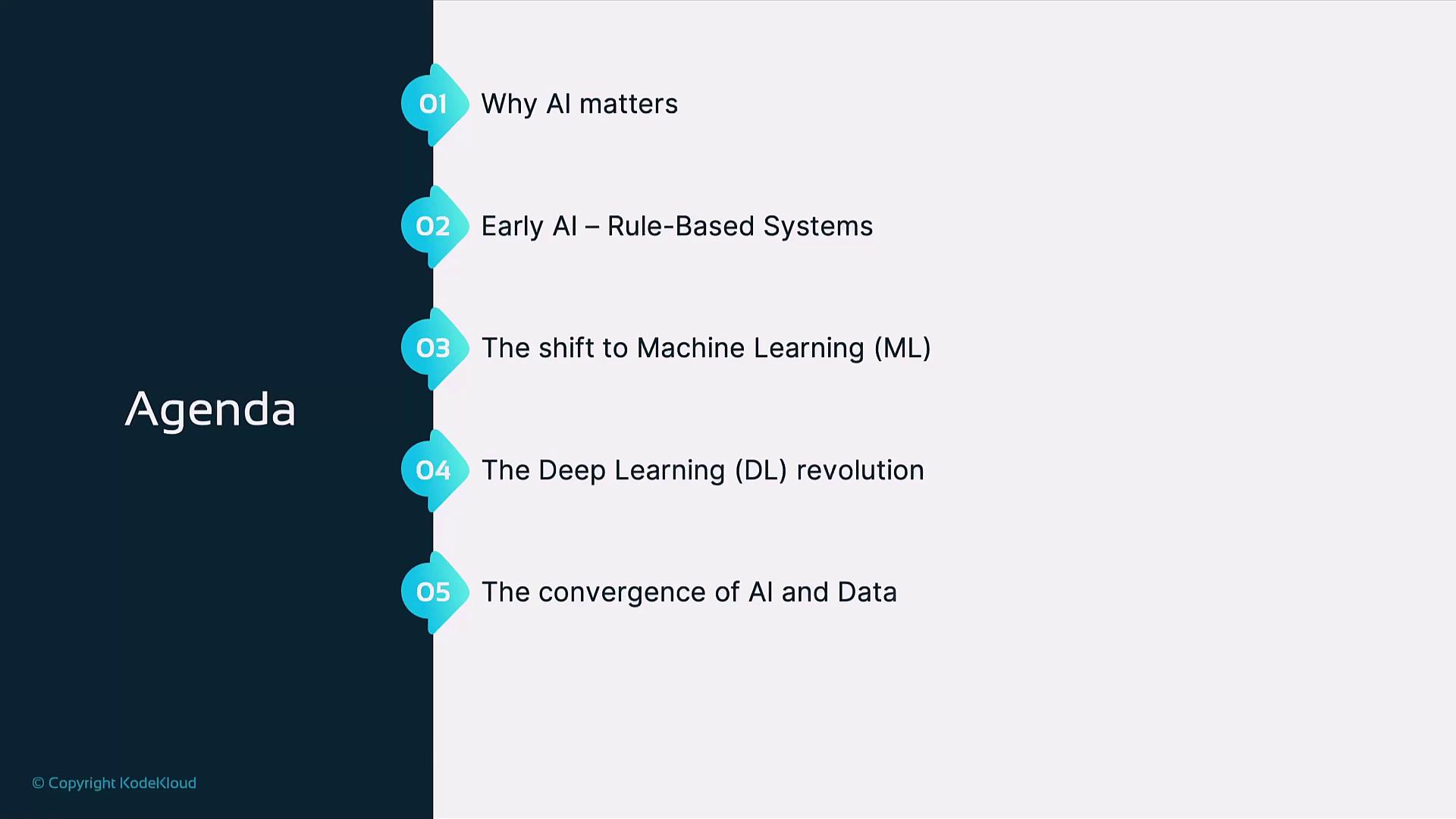
Why AI Matters
Understanding AI’s evolution reveals both its potential impact and the challenges that lie ahead. From deterministic rule engines to adaptive neural nets, each advancement has unlocked new capabilities across industries—from healthcare diagnostics to autonomous vehicles.
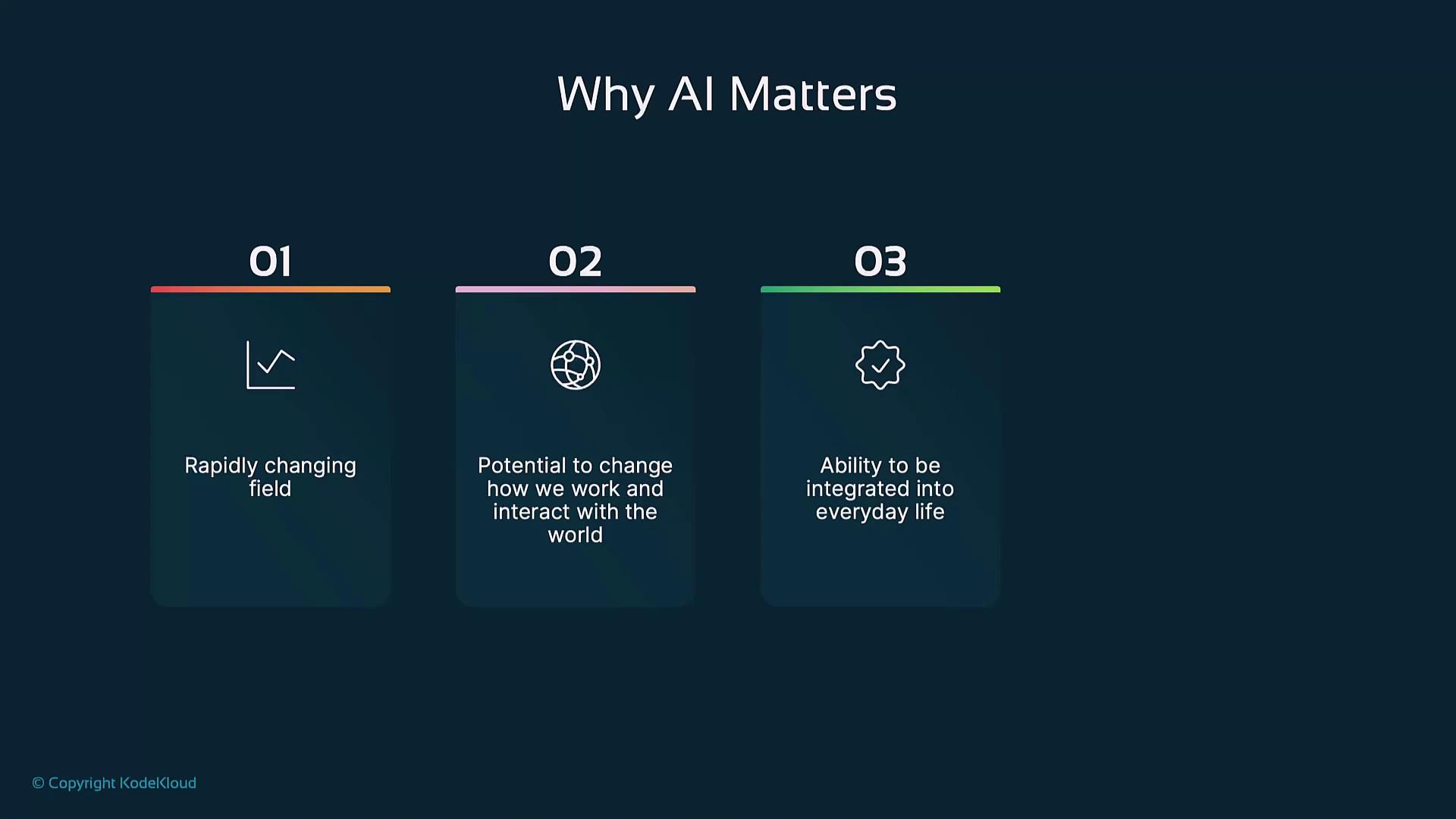
Note
AI adoption accelerates innovation—organizations that leverage data-driven insights gain competitive advantage.
Early AI: Rule-Based Systems
Rule-based systems were the first widely deployed AI applications. They use symbolic reasoning: expert-defined “if–then” rules that drive deterministic outputs.

Key components:
| Component | Description |
|---|---|
| Knowledge Base | Expert-curated rules (if–then statements) |
| Inference Engine | Applies rules to input data to generate conclusions |
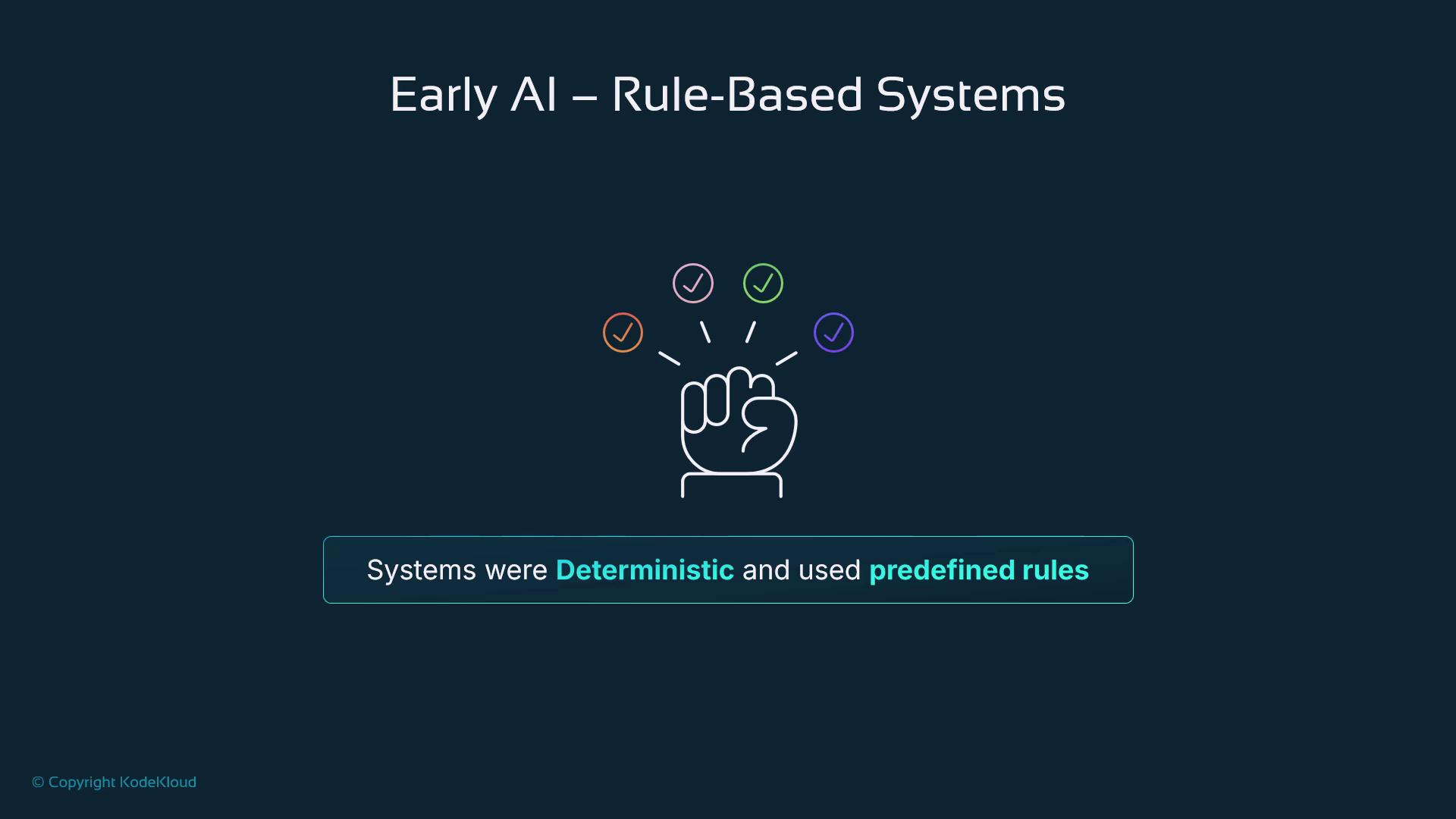
Example rule format:
IF symptom X is present
THEN test for condition Y

Notable Examples
- MYCIN (1970s): Expert system diagnosing blood infections with ~600 rules
- IBM Deep Thought: Chess engine using handcrafted evaluation functions
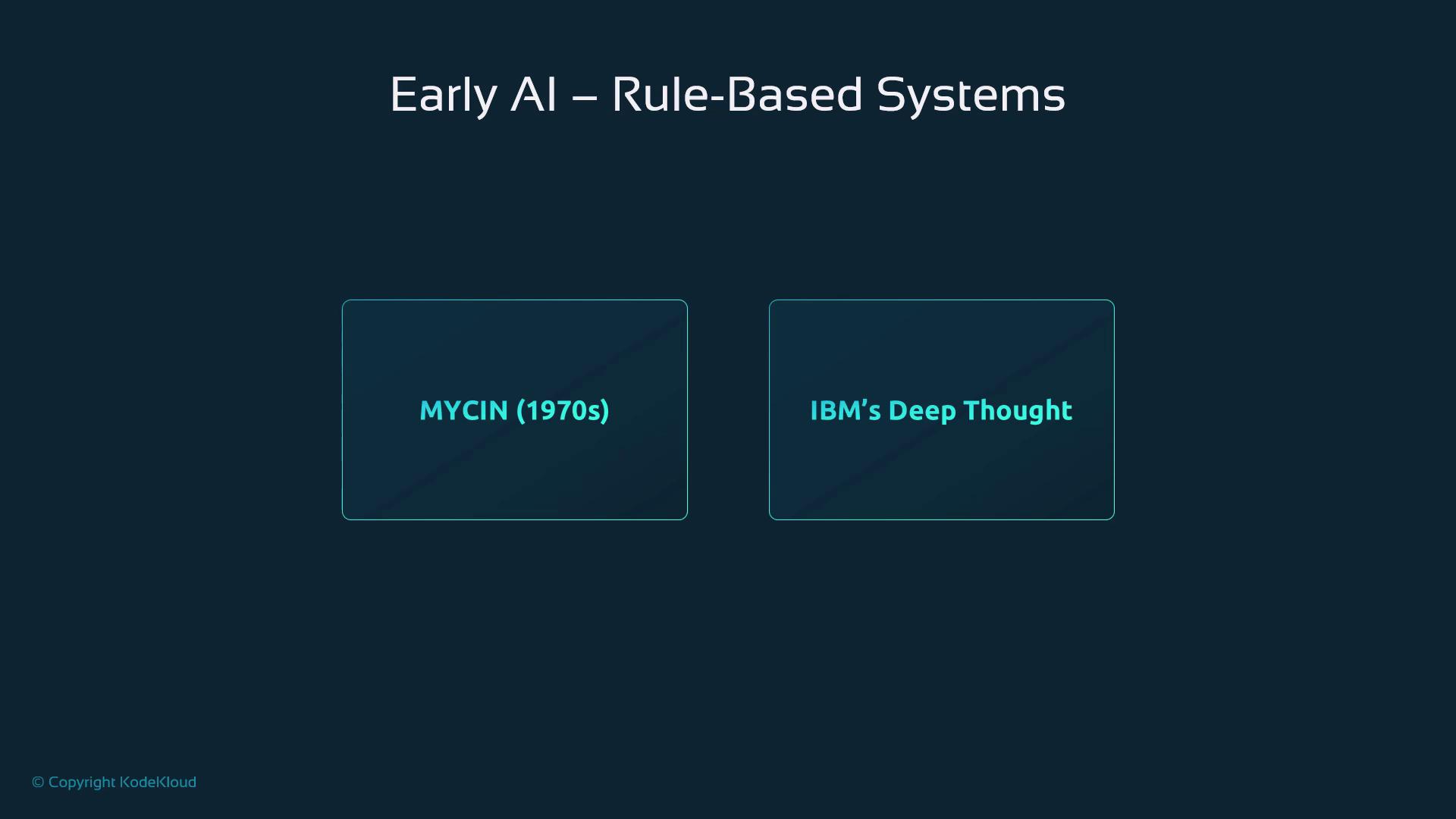
Timeline Highlights
| Decade | Milestone |
|---|---|
| 1940s | Early neural-network concepts |
| 1950s | Turing Test proposed |
| 1960s | ELIZA chatbot |
| 1980s | Boom of commercial expert systems |
| 1990s | Advances in computer vision |
| 2000s | Internet services: Google, Yelp, Waze |
| 2010s | AI in games: Watson (Jeopardy), Deep Blue (Chess) |
| 2020s | Large language models pass Turing-style tests |
Benefits vs. Limitations
| Benefits | Limitations |
|---|---|
| Transparent, easy to debug | Difficult to scale as rules multiply |
| Suitable for narrow, well-defined tasks | No learning or adaptation capability |
| Predictable, deterministic outputs | Fragile with novel or ambiguous inputs |

The Shift to Machine Learning
Machine learning (ML) enabled systems to learn from data rather than depend on hardcoded logic. By training on historical examples, ML models generalize to new inputs.
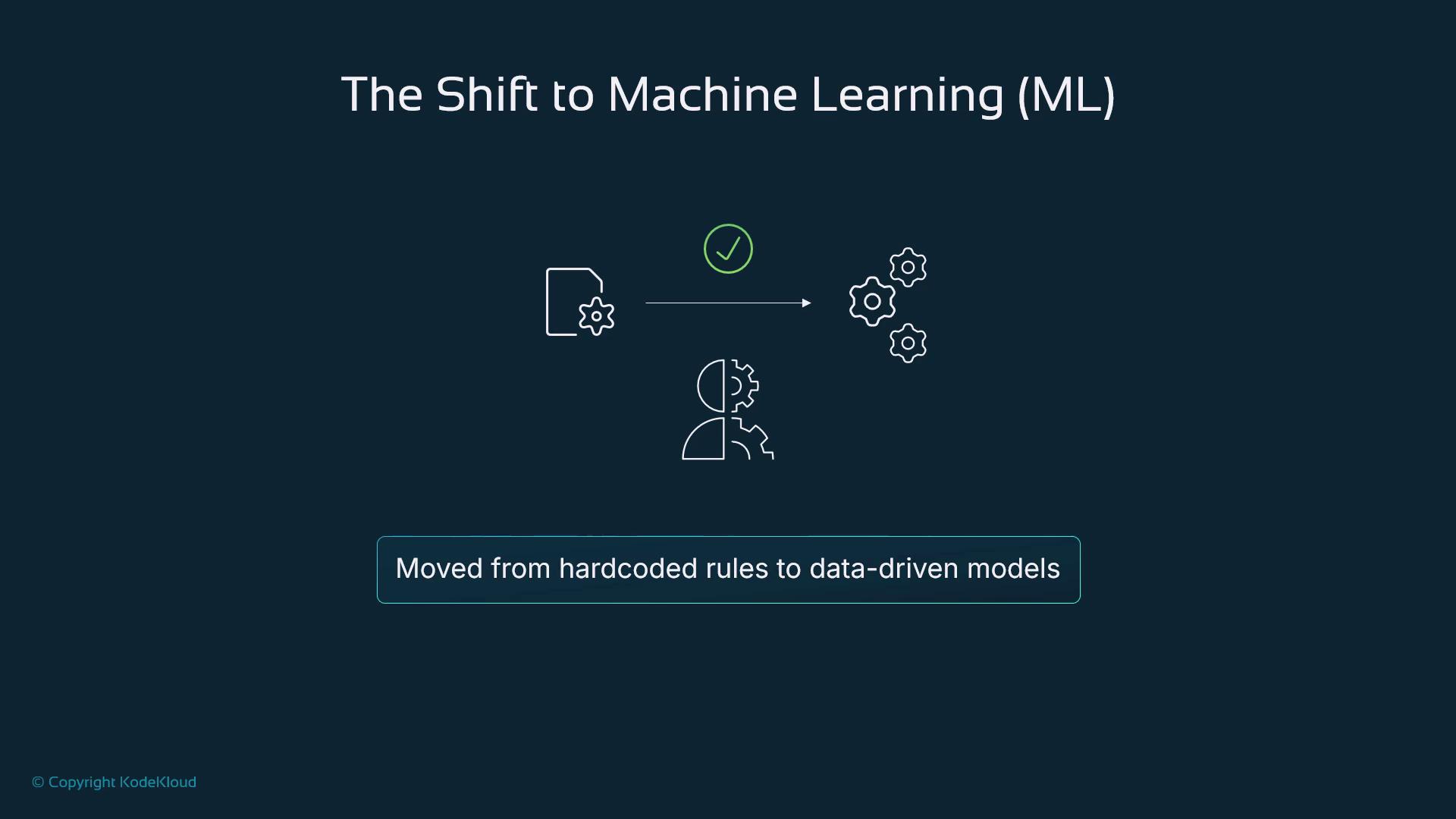
Primary ML paradigms:
| Approach | Description | Example |
|---|---|---|
| Supervised Learning | Learns from labeled input–output pairs | Email spam filter |
| Unsupervised Learning | Discovers patterns in unlabeled data | Customer segmentation (clustering) |
| Reinforcement Learning | Learns via rewards/penalties in dynamic environments | Game-playing agents (e.g., AlphaGo) |
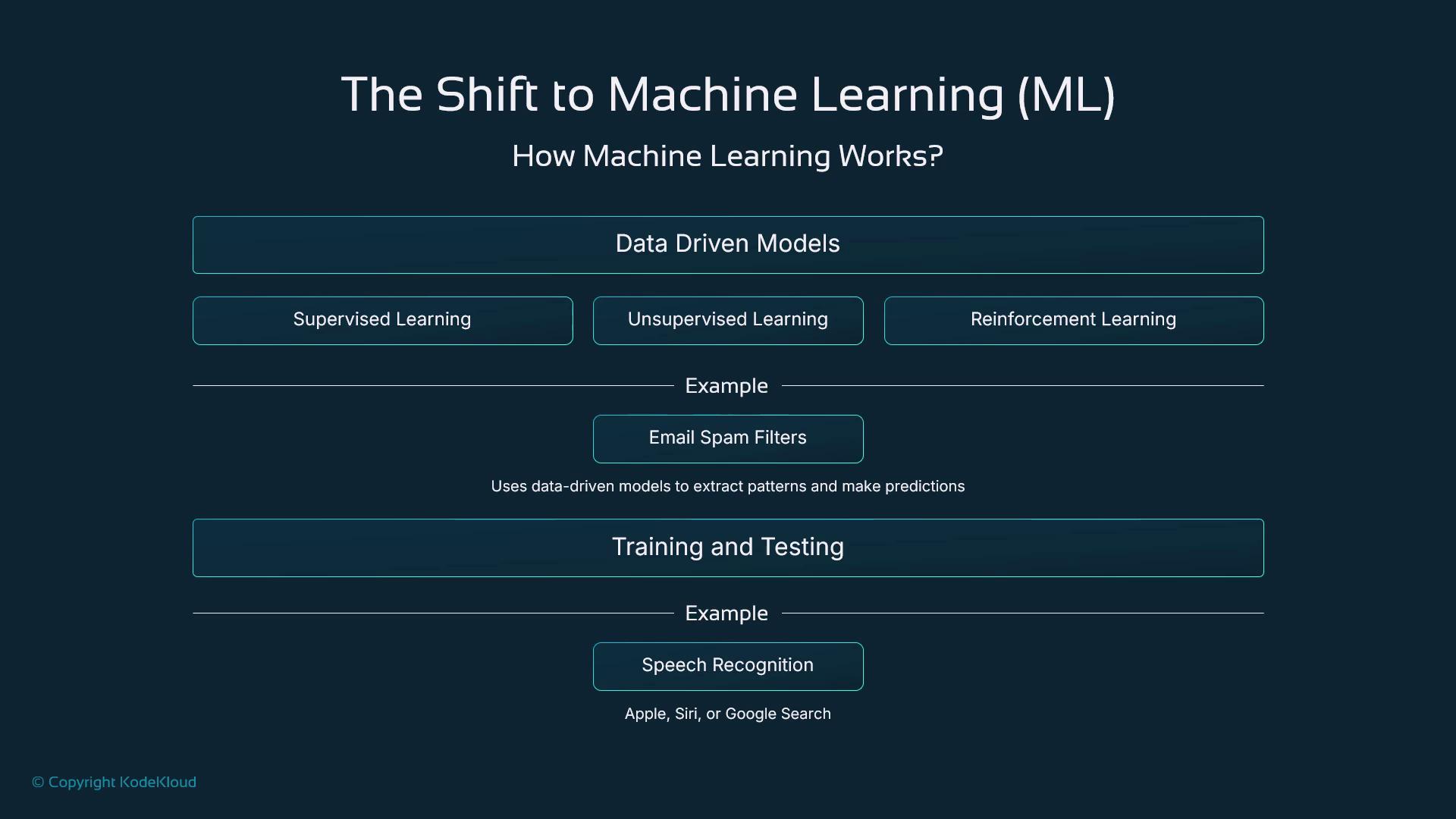
Example Workflow
Train on a labeled dataset → Validate on a separate test set → Deploy the model for real-time predictions.
ML Benefits vs. Limitations
| Benefits | Limitations |
|---|---|
| Adapts and improves with more data | Requires large, high-quality datasets |
| Scales to complex, dynamic environments | Often operates as a “black box” |
| Handles uncertainty better than rule-based systems | Can inherit biases from training data |
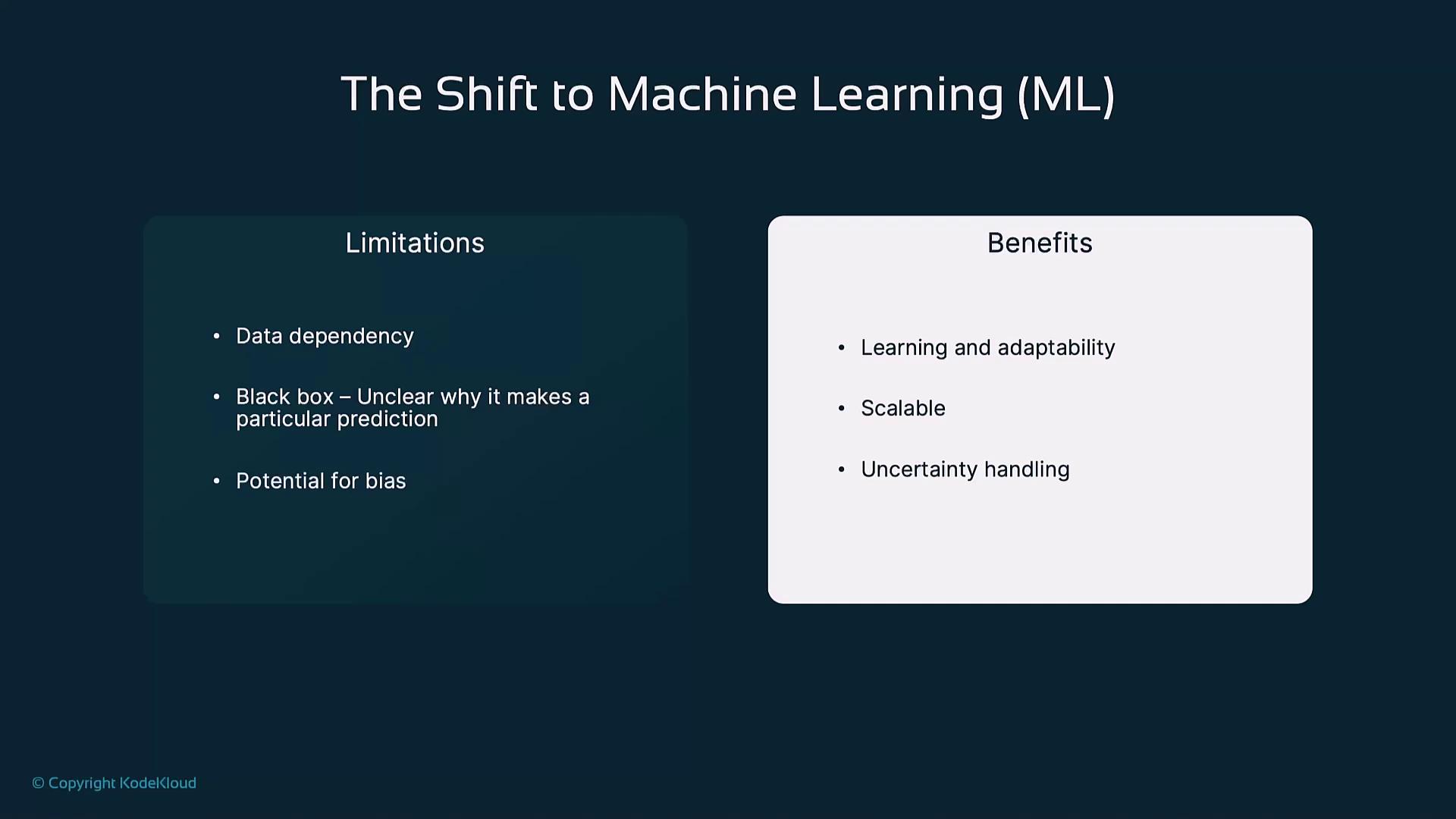
The Deep Learning Revolution
Deep learning (DL) leverages multi-layer neural networks to automatically discover hierarchical feature representations from raw data.
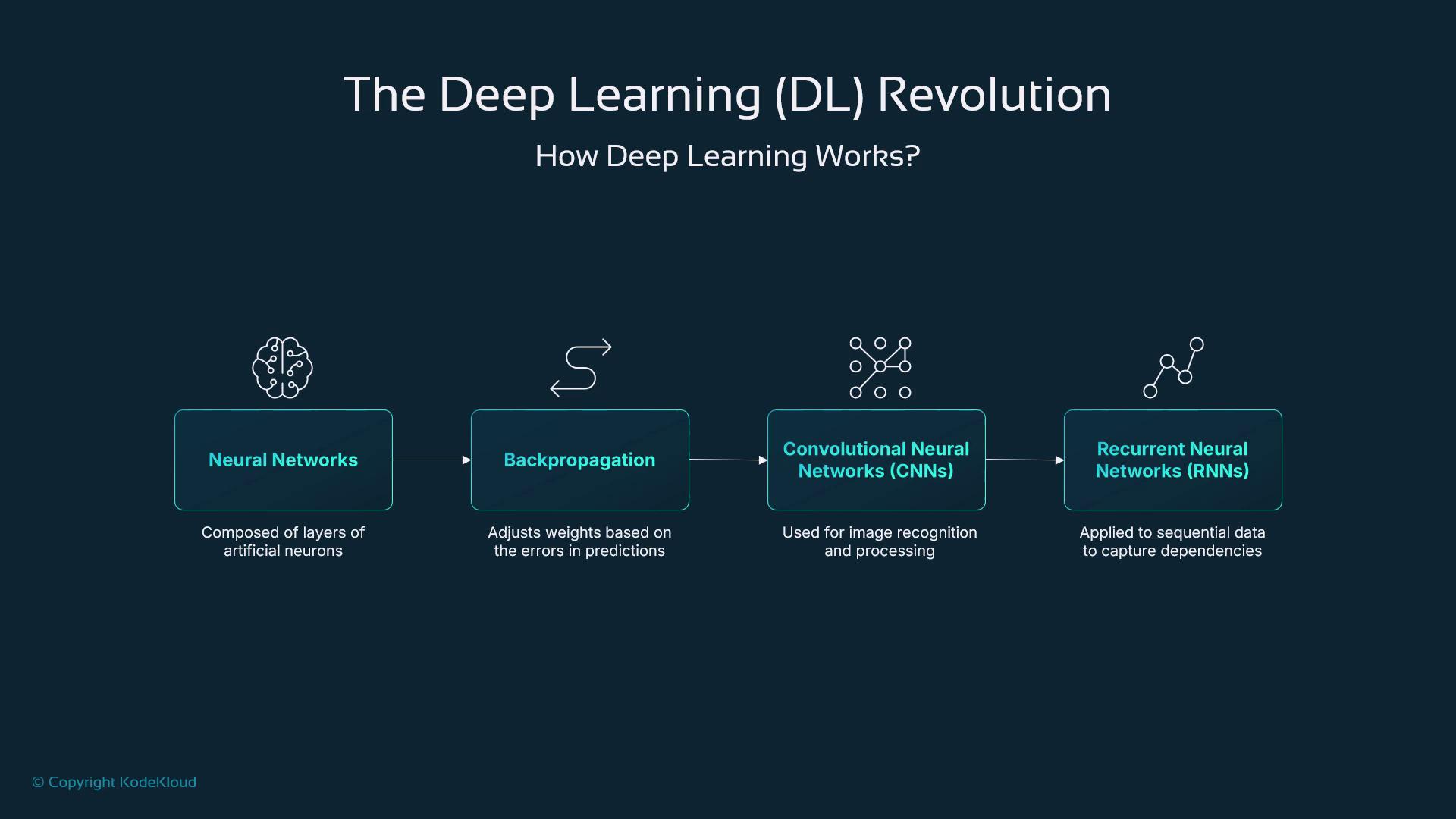
Core concepts:
| Concept | Description |
|---|---|
| Neural Networks | Layers of interconnected “neurons” |
| Backpropagation | Weight-update algorithm based on prediction errors |
| Convolutional NN (CNN) | Spatial feature extraction for images |
| Recurrent NN (RNN) | Sequential data modeling (e.g., text, audio) |
Real-World DL Applications
- Image recognition with CNNs
- Natural language generation (e.g., GPT-4)
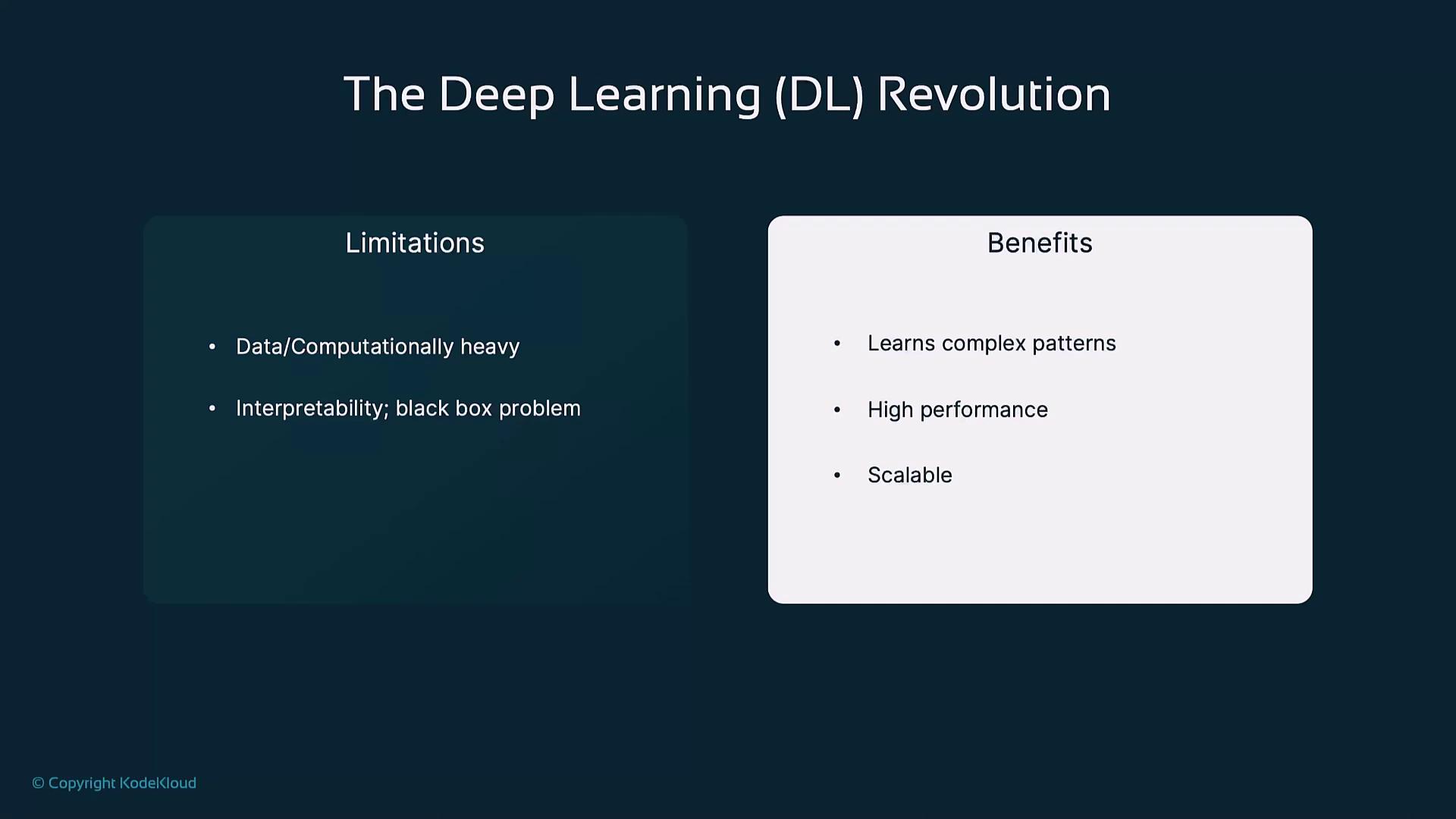
| Benefits | Limitations |
|---|---|
| Learns complex features automatically | Requires massive datasets |
| Excels at vision, speech, and NLP tasks | High computational cost (GPUs/TPUs needed) |
| Improves with scale of data and compute | Often opaque (“black box” interpretability) |
Machine Learning vs. Deep Learning
The diagram below contrasts ML’s two-step pipeline with DL’s end-to-end learning for an image classification task.
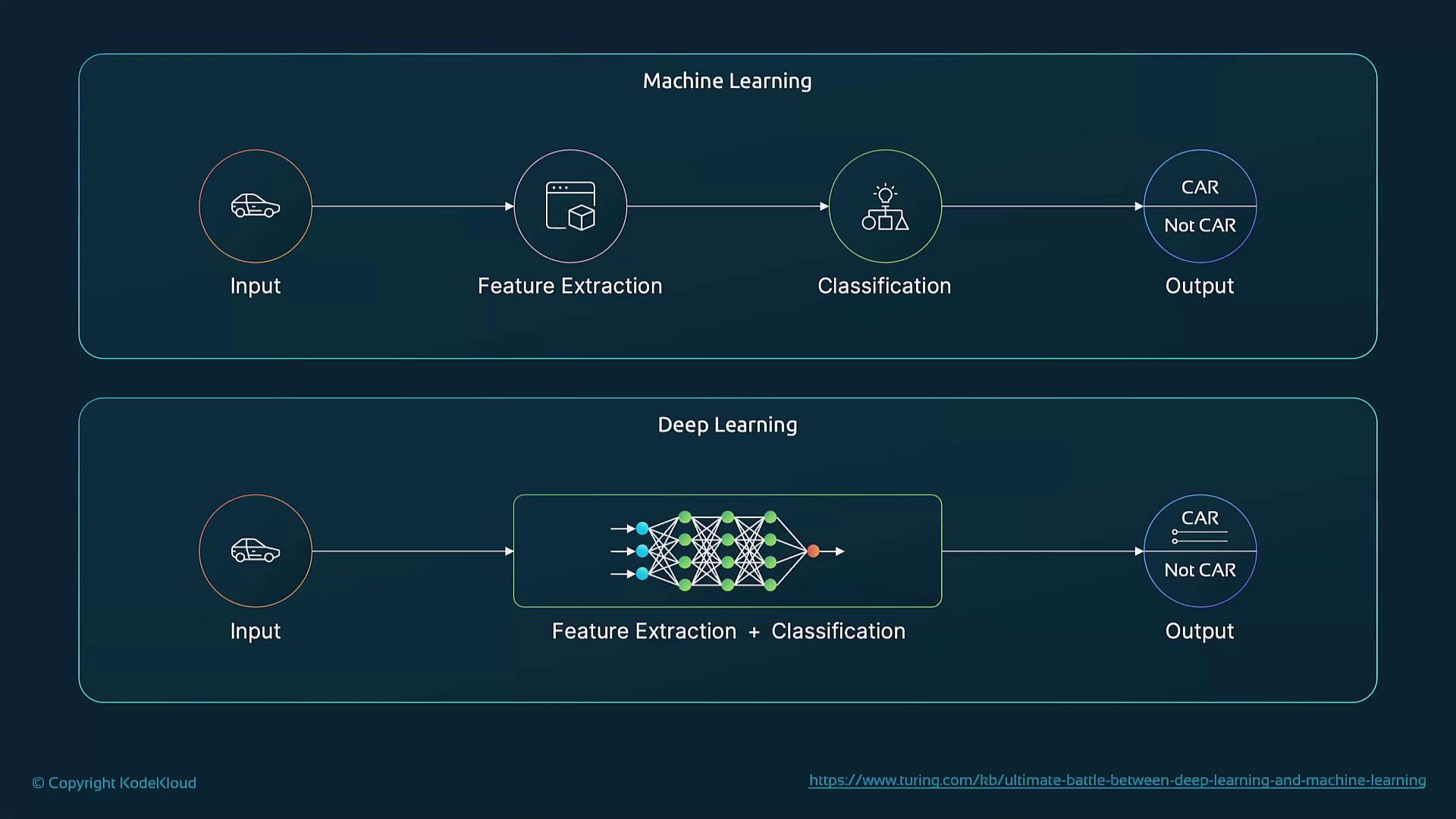
- Machine Learning: Feature engineering → Model training → Prediction
- Deep Learning: Single neural network handles all steps jointly
Convergence of AI and Data
Big data, cloud computing, and specialized hardware have created the perfect storm for modern AI breakthroughs.
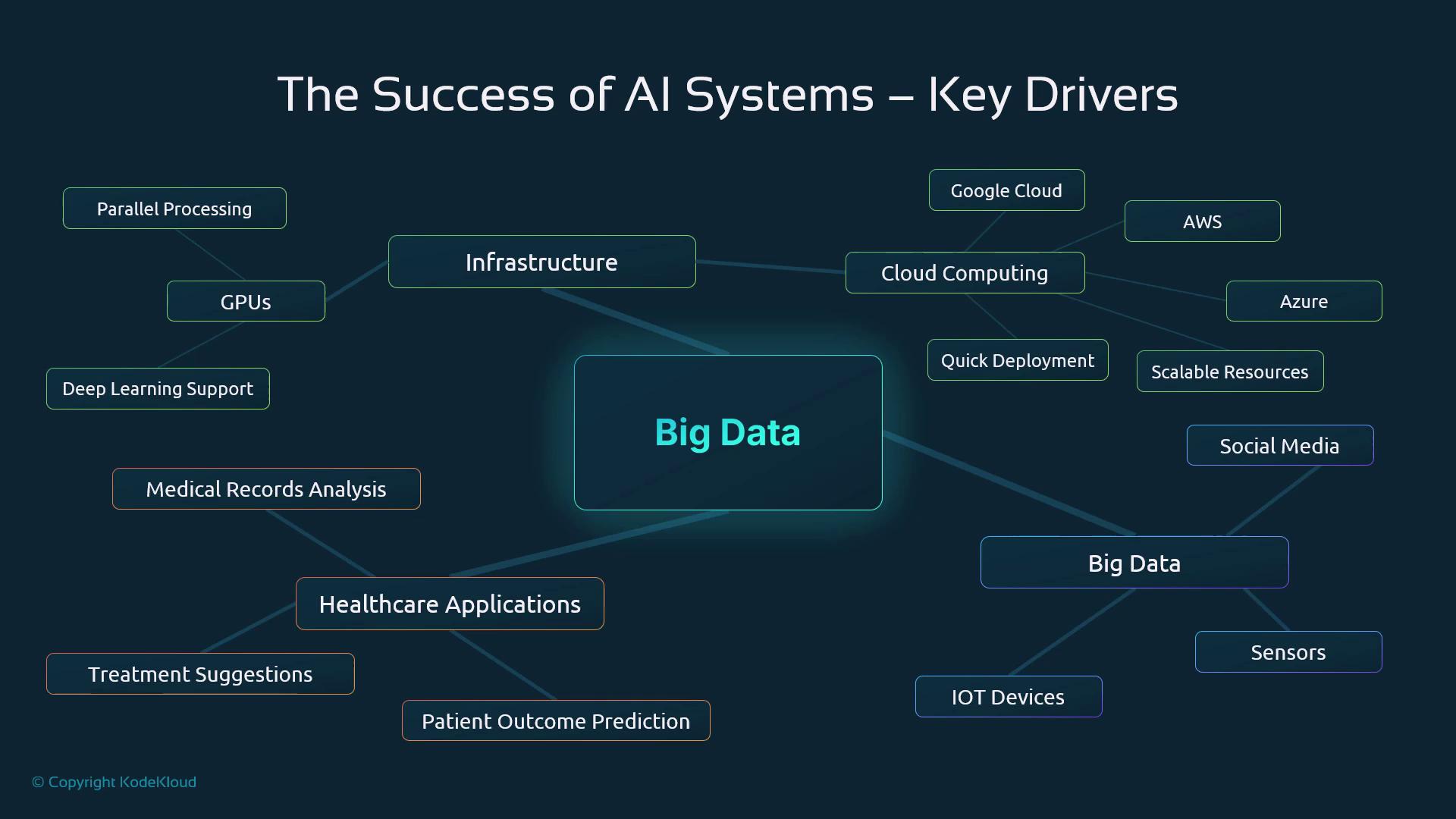
Key enablers:
- GPUs/TPUs: Parallel processing for large-scale DL training
- Cloud Platforms: On-demand compute (AWS, Google Cloud, Azure)
- Data Ecosystems: IoT, social media, sensors feeding continuous streams of data
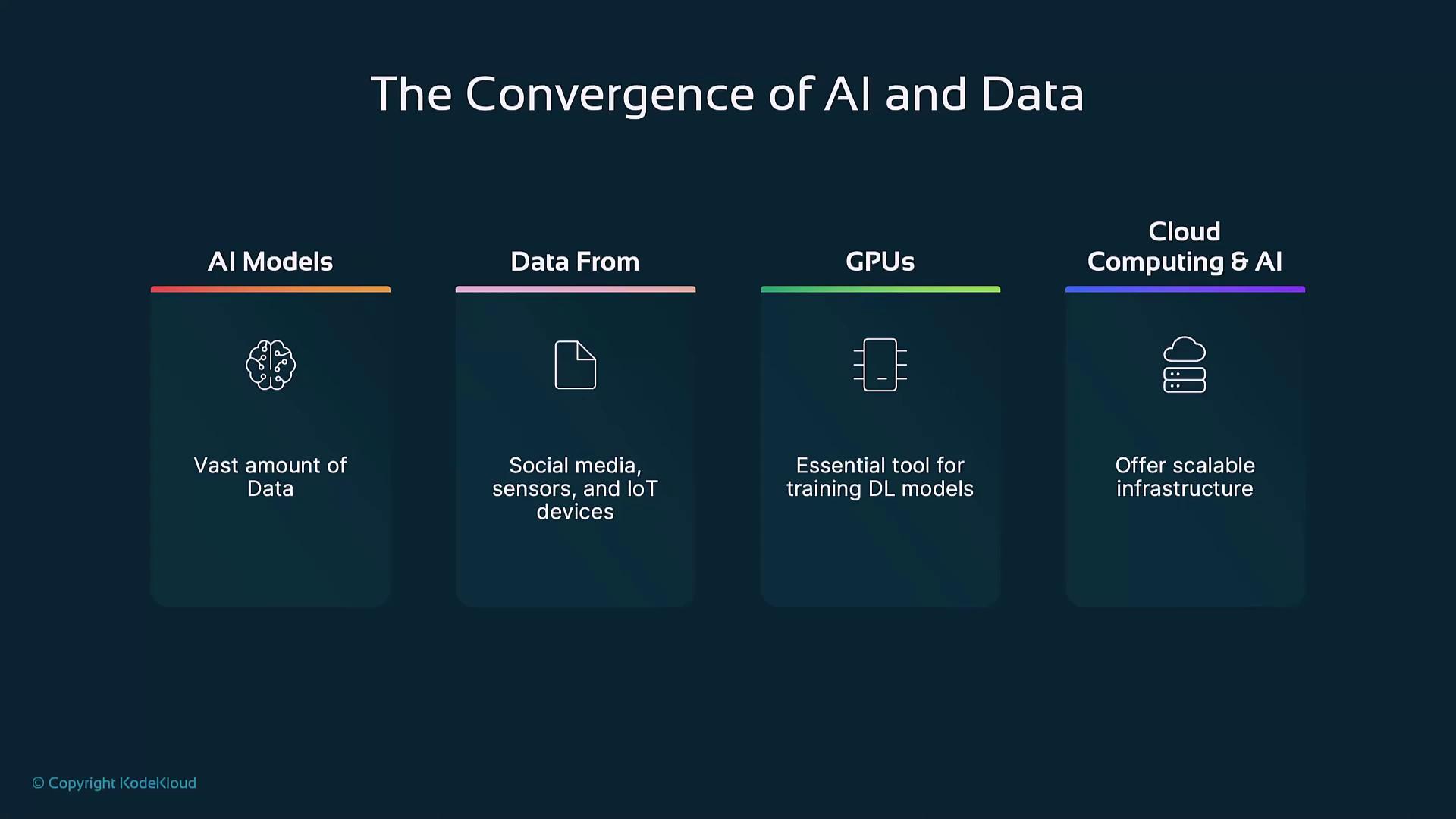
These elements power advancements in autonomous vehicles, personalized medicine, and real-time analytics.
The Future of AI—Beyond Deep Learning
AI research now targets two critical challenges:
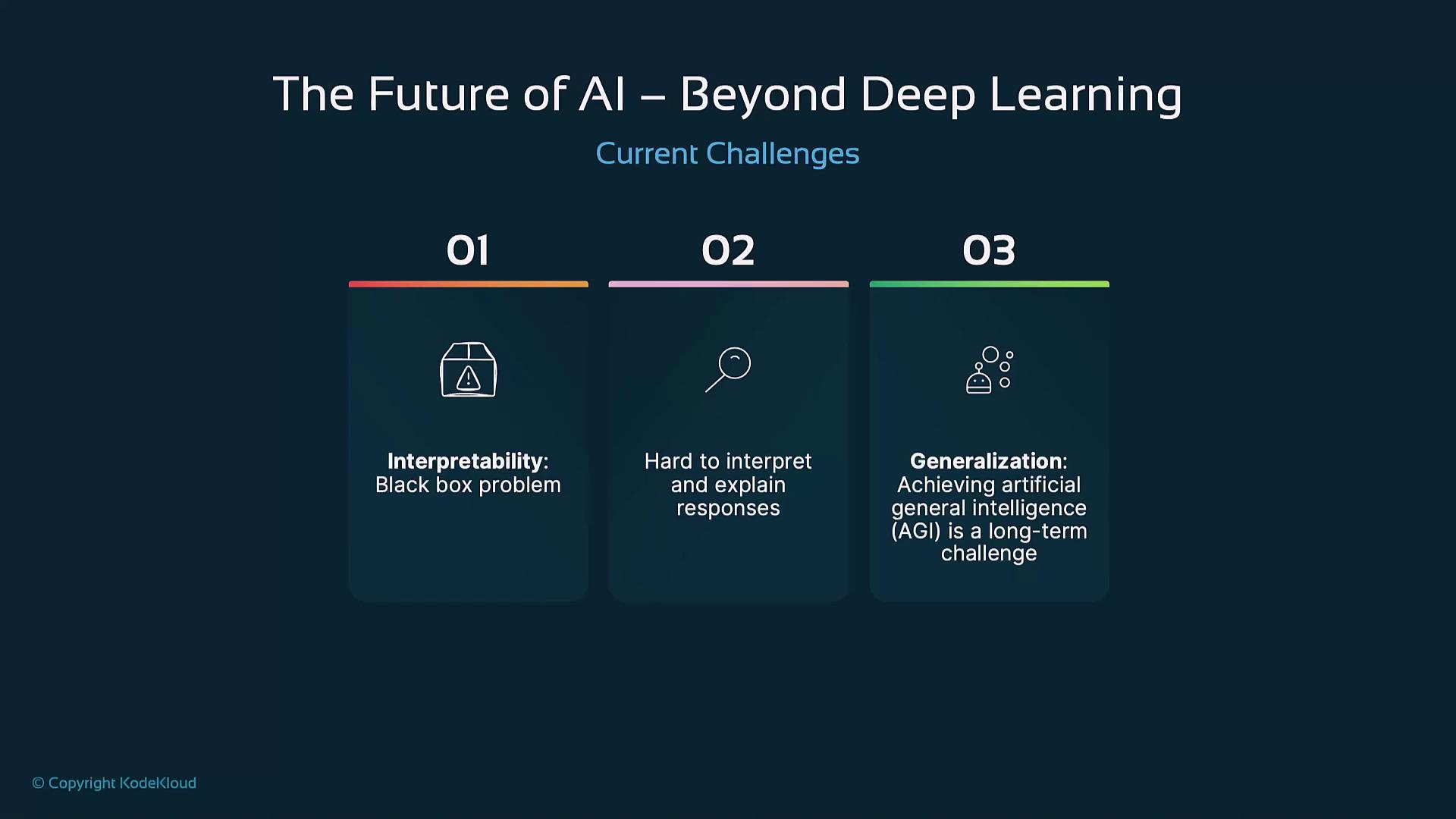
Warning
Model interpretability remains a major concern—without transparency, deploying AI in high-stakes domains (e.g., healthcare) poses risks.
Emerging trends:
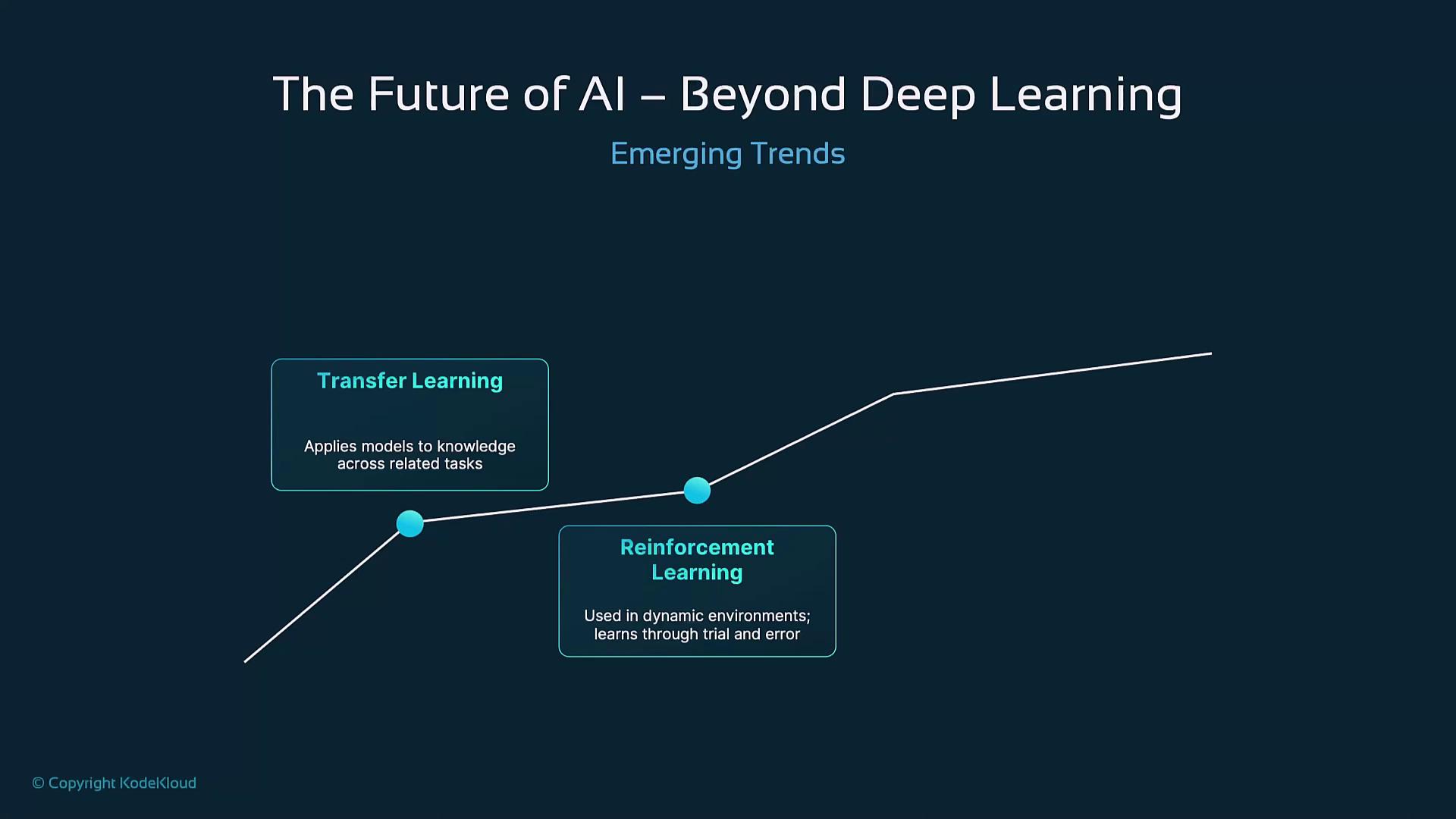
- Transfer Learning: Adapting pretrained models to new tasks
- Reinforcement Learning (RL): Learning optimal policies via trial and error
- Neurosymbolic AI: Merging deep learning with symbolic reasoning for greater explainability
Further Reading & References
Watch Video
Watch video content